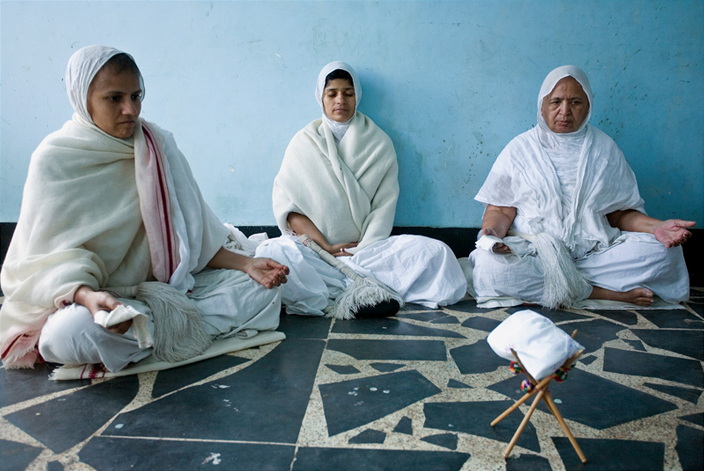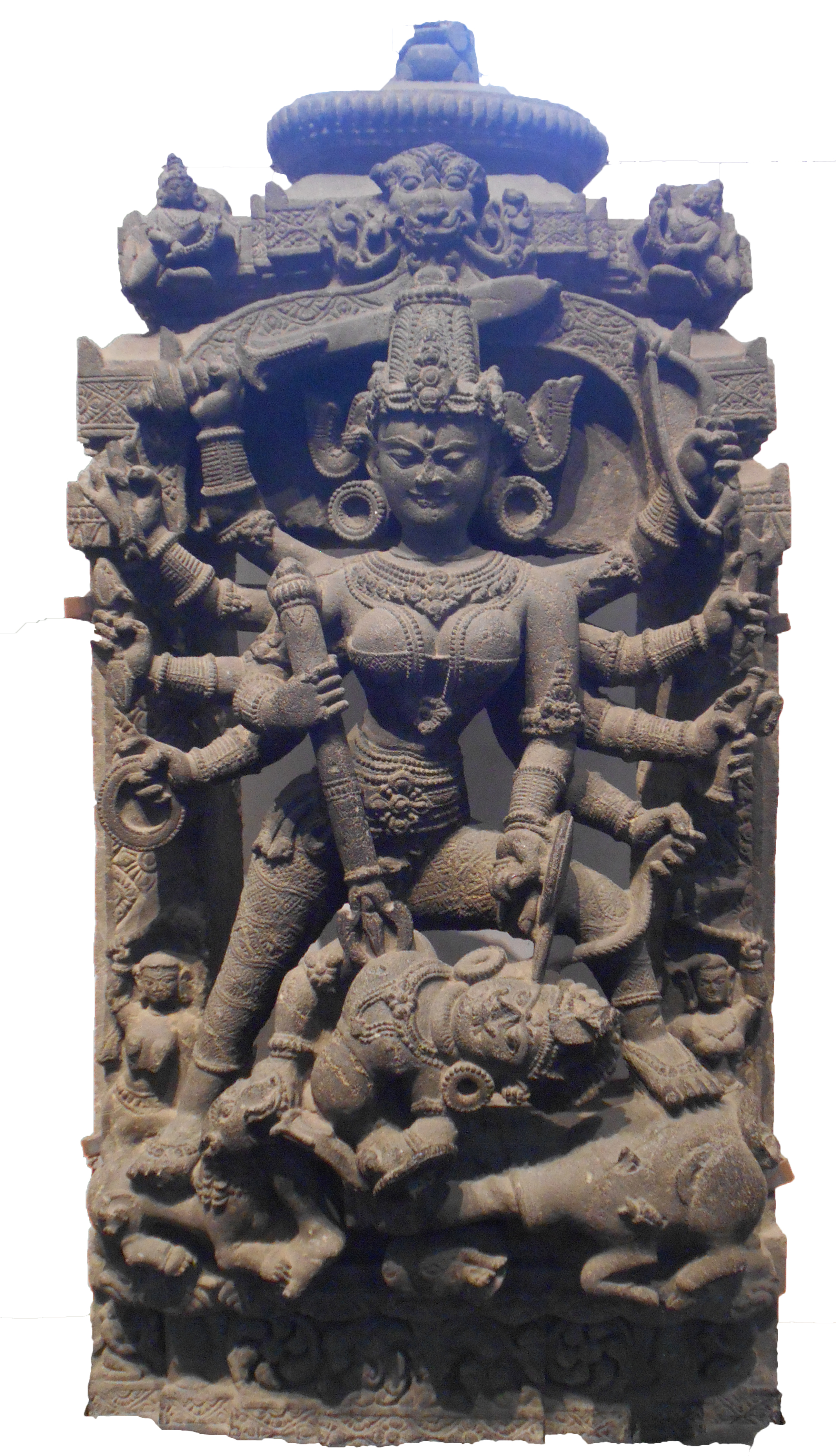|
Tulsi In Hinduism
Tulasi (), Tulsi or Vrinda ( holy basil) is a sacred plant in Hindu tradition. Hindus regard it as an earthly manifestation of the goddess Tulasi; she is regarded as the avatar of Lakshmi, and thus the consort of the god Vishnu. In another iteration, as Vrinda, she is married to Jalandhara. The offering of its leaves is recommended in ritualistic worship of Vishnu and his avatars, like Krishna and Vithoba. Traditionally, the tulasi is planted in the center of the central courtyard of Hindu houses. The plant is cultivated for religious purposes, and for its essential oil. Nomenclature In the Vedas, Tulasi ("matchless") is known as ''Vaishnavi'' ("belonging to Vishnu"), ''Vishnu Vallabha'' ("beloved of Vishnu"), ''Haripriya'' ("beloved of Vishnu"), ''Vishnu Tulasi''. The Tulasi with green leaves is called ''Shri-Tulasi'' ("fortunate Tulasi") or ''Lakshmi-Tulasi''; Shri is also a synonym for Lakshmi, Vishnu's spouse. This variety is also known as ''Rama-Tulasi'' ("bright Tulasi ... [...More Info...] [...Related Items...] OR: [Wikipedia] [Google] [Baidu] |
Holy Basil
''Ocimum tenuiflorum'', commonly known as holy basil, ''tulasi'' or ''tulsi'' (), is an aromatic perennial plant in the family Lamiaceae. It is widely cultivated throughout the Southeast Asian tropics. It is native to tropical and subtropical regions of Asia, Australia and the western Pacific. This plant has escaped from cultivation and has naturalized in many tropical regions of the Americas. It is an agricultural and environmental weed. ''Tulasi'' is cultivated for religious and traditional medicine purposes, and also for its essential oil. It is widely used as an herbal tea, commonly used in Ayurveda. It has a place within the Vaishnava tradition of Hinduism, in which devotees perform worship involving the plant or its leaves. Morphology Holy basil is an erect, many-branched subshrub, tall with hairy stems. Leaves are green or purple; they are simple, petioled, with an ovate blade up to long, which usually has a slightly toothed margin; they are strongly scented and h ... [...More Info...] [...Related Items...] OR: [Wikipedia] [Google] [Baidu] |
Shri
Shri (; , ) is a Sanskrit term denoting resplendence, wealth and prosperity, primarily used as an honorific. The word is widely used in South and Southeast Asian languages such as Assamese, Meitei ( Manipuri), Marathi, Malay (including Indonesian and Malaysian), Javanese, Balinese, Sundanese, Sinhalese, Thai, Tamil, Telugu, Odia, Assamese, Punjabi, Hindi, Bengali, Nepali, Malayalam, Kannada, Sanskrit, Pali, Khmer, and also among Philippine languages. It is usually transliterated as ''Sri'', ''Sree'', ''Shri'', ''Shiri'', ''Shree'', ''Si'', or ''Seri'' based on the local convention for transliteration. In Tamil it evolved to Tiru. The term is used in Indian subcontinent and Southeast Asia as a polite form of address equivalent to the English "Mr." in written and spoken language. "Shri" is also used as a title of veneration for deities or as honorific title for individuals. "Shri" is also an epithet for Hindu goddess Lakshmi, while a '' yantra'' or a mystica ... [...More Info...] [...Related Items...] OR: [Wikipedia] [Google] [Baidu] |
Tapas (Indian Religions)
Tapas (Sanskrit: तपस्, romanized: tapas) is a variety of austere spiritual meditation practices in Indian religions. In Jainism, it means asceticism (austerities, body mortification); in Buddhism, it denotes spiritual practices including meditation and self-discipline; and in the different traditions within Hinduism it means a spectrum of practices ranging from asceticism, 'inner cleansing' to self-discipline by meditation practices. The ''Tapas'' practice often involves solitude and is a part of monastic practices that are believed to be a means to moksha (liberation, salvation). In the Vedas literature of Hinduism, fusion words based on ''tapas'' are widely used to expound several spiritual concepts that develop through heat or inner energy, such as meditation, any process to reach special observations and insights, the spiritual ecstasy of a yogin or ''Tāpasa'' (a vṛddhi derivative meaning "a practitioner of austerities, an ascetic"), even warmth of sexual inti ... [...More Info...] [...Related Items...] OR: [Wikipedia] [Google] [Baidu] |
Daitya
The daityas () are a race of asuras in Hindu mythology, descended from Kashyapa and his wife, Diti. Prominent members of this race include Hiranyaksha, Hiranyakashipu, and Mahabali, all of whom overran the earth, and required three of Vishnu's avataras to be vanquished. Literature The Manusmṛiti classifies the daityas as good, while placing them at a lower level than the devas: The origin and noteworthy members of this race are specified in the Harivamsha Purana: List of daityas Some of the notable daityas mentioned in Hindu mythology include: *Hiranyaksha – First son of Kashyapa and Diti *Hiranyakashipu – Second son of Kashyapa and Diti * Holikā – First daughter of Kashyapa and Diti * Andhakāsura – Son of Hiraṇyākṣa (Born from the sweat of Śiva) * Prahlāda – Son of Hiraṇyakaśipu * Virocana – Son of Prahlāda, father of Mahābalī * Devamba – Mother of Mahābalī * Mahābalī – Son of Virocana * Bāṇāsura – Son of Mahābalī *Uṣ� ... [...More Info...] [...Related Items...] OR: [Wikipedia] [Google] [Baidu] |
Brahma
Brahma (, ) is a Hindu god, referred to as "the Creator" within the Trimurti, the triple deity, trinity of Para Brahman, supreme divinity that includes Vishnu and Shiva.Jan Gonda (1969)The Hindu Trinity, Anthropos, Bd 63/64, H 1/2, pp. 212–226.Jan Gonda (1969)The Hindu Trinity, Anthropos, Bd 63/64, H 1/2, pp. 218–219. He is associated with creation, knowledge, and the ''Vedas''. Brahma is prominently mentioned in Creation myth, creation legends. In some ''Puranas'', he created himself in a golden embryo known as the Hiranyagarbha. Brahma is frequently identified with the Rigvedic deities, Vedic god Prajapati.;David Leeming (2005), The Oxford Companion to World Mythology, Oxford University Press, , page 54, Quote: "Especially in the Vedanta Hindu Philosophy, Brahman is the Absolute. In the Upanishads, Brahman becomes the eternal first cause, present everywhere and nowhere, always and never. Brahman can be incarnated in Brahma, in Vishnu, in Shiva. To put it another way, eve ... [...More Info...] [...Related Items...] OR: [Wikipedia] [Google] [Baidu] |
Badrinath
Badrinath is a town and nagar panchayat in Chamoli district in the state of Uttarakhand, India. It is a Hindu holy place, and is one of the four sites in India's Char Dham pilgrimage. It is also part of India's Chota Char Dham pilgrimage circuit and gets its name from the Badrinath Temple. Etymology Badrinath derives from the Sanskrit compound Badarīnātha, consisting of the terms ''badarī'' ( jujube tree) and ''nātha'' (lord), an epithet of Vishnu. It is also known as Badarikashrama. History In earlier days, pilgrims used to walk hundreds of miles to visit the Badrinath temple. The temple has been repeatedly destroyed by earthquakes and avalanches. As late as the First World War, the town consisted only of the 20-odd huts used by the temple's staff, but the site drew thousands each year and up to 50,000 on its duodecennial festivals (every twelve years). In recent years its popularity has increased still more, with an estimated 600,000 pilgrims visiting during t ... [...More Info...] [...Related Items...] OR: [Wikipedia] [Google] [Baidu] |
Vedavati
Vedavati (Sanskrit: वेदवती, IAST: ''Vedavatī'') is the previous birth of the goddess Sita in Hinduism. She is an avatar of the goddess of prosperity, Lakshmi. Legend Birth Vedavati was the daughter of Brahmarishi Kushadhvaja, who was the son of Brihaspati, the guru of the devas. Having spent his life chanting and studying the sacred Vedas, he named his daughter ''Vedavati'', after the texts, born to him as the fruit of his bhakti and tapasya. Dedication to Vishnu Vedavati's father wanted his child to have the preserver god Vishnu as her husband. He thus rejected many powerful kings and celestial beings who sought his daughter's hand. Outraged by his rejection, King Sambhu murdered her parents in the middle of a moonless night. Vedavati continued to live in the ashram of her parents, meditating night and day and performing a great tapasya to win Vishnu for her husband. The ''Ramayana'' describes her as wearing the hide of a black antelope, her hair matt ... [...More Info...] [...Related Items...] OR: [Wikipedia] [Google] [Baidu] |
Surya
Surya ( ; , ) is the Sun#Dalal, Dalal, p. 399 as well as the solar deity in Hinduism. He is traditionally one of the major five deities in the Smarta tradition, Smarta tradition, all of whom are considered as equivalent deities in the Panchayatana puja and a means to realise Brahman. Other names of Surya in ancient Indian literature include Āditya, Arka, Bhānu, Savitṛ, Pūṣan, Ravi, Mārtāṇḍa, Mitra, Bhāskara, Prabhākara, Kathiravan, and Vivasvat.#Dalal, Dalal, pp. 5, 311 The iconography of Surya is often depicted riding a chariot harnessed by horses, often seven in number which represent the seven colours of visible light, and the seven days of the week. During the medieval period, Surya was worshipped in tandem with Brahma during the day, Shiva at noon, and Vishnu in the evening. In some ancient texts and art, Surya is presented syncretically with Indra, Ganesha, and others. Surya as a deity is also found in the arts and literature of Buddhism and Jainism. Surya ... [...More Info...] [...Related Items...] OR: [Wikipedia] [Google] [Baidu] |
Shiva
Shiva (; , ), also known as Mahadeva (; , , Help:IPA/Sanskrit, [mɐɦaːd̪eːʋɐh]) and Hara, is one of the Hindu deities, principal deities of Hinduism. He is the God in Hinduism, Supreme Being in Shaivism, one of the major traditions within Hinduism. Shiva is known as ''The Destroyer'' within the Trimurti, the Hinduism, Hindu trinity which also includes Brahma and Vishnu. In the Shaivite tradition, Shiva is the Supreme Lord who creates, protects and transforms the universe. In the goddess-oriented Shaktism, Shakta tradition, the Supreme Goddess (Devi) is regarded as the energy and creative power (Shakti) and the equal complementary partner of Shiva. Shiva is one of the five equivalent deities in Panchayatana puja of the Smarta Tradition, Smarta tradition of Hinduism. Shiva has many aspects, benevolent as well as fearsome. In benevolent aspects, he is depicted as an Omniscience, omniscient yogi who lives an Asceticism#Hinduism, ascetic life on Kailasa as well as a house ... [...More Info...] [...Related Items...] OR: [Wikipedia] [Google] [Baidu] |
Queen Consort
A queen consort is the wife of a reigning king, and usually shares her spouse's social Imperial, royal and noble ranks, rank and status. She holds the feminine equivalent of the king's monarchical titles and may be crowned and anointed, but historically she does not formally share the king's political and military powers, unless on occasion acting as regent. In contrast, a queen regnant is a female monarch who rules ''suo jure'' (Latin for, "in her own right") and usually becomes queen by inheriting the throne upon the death of the previous monarch. A queen dowager is a widowed queen consort, and a queen mother is a queen dowager who is the mother of the current monarch. Titles When a title other than king is held by the sovereign, his wife can be referred to by the feminine equivalent, such as princess consort or empress consort. In monarchies where polygamy has been practised in the past (such as Morocco and Thailand), or is practised today (such as the Zulu people, Zulu ... [...More Info...] [...Related Items...] OR: [Wikipedia] [Google] [Baidu] |
Tulsi
''Ocimum tenuiflorum'', commonly known as holy basil, ''tulasi'' or ''tulsi'' (), is an aromatic perennial plant in the family Lamiaceae. It is widely cultivated throughout the Southeast Asian tropics. It is native to tropical and subtropical regions of Asia, Australia and the western Pacific. This plant has escaped from cultivation and has naturalized in many tropical regions of the Americas. It is an agricultural and environmental weed. ''Tulasi'' is cultivated for religious and traditional medicine purposes, and also for its essential oil. It is widely used as an herbal tea, commonly used in Ayurveda. It has a place within the Vaishnava tradition of Hinduism, in which devotees perform worship involving the plant or its leaves. Morphology Holy basil is an erect, many-branched subshrub, tall with hairy stems. Leaves are green or purple; they are simple, petioled, with an ovate blade up to long, which usually has a slightly toothed margin; they are strongly scented and h ... [...More Info...] [...Related Items...] OR: [Wikipedia] [Google] [Baidu] |
Devi Bhagavata Purana
The Devi Bhagavata Purana (, '), also known as the Devi Purana or simply Devi Bhagavatam, is one of the eighteen Mahapurana (Hinduism), Mahapuranas as per Shiva Purana of Hinduism. Composed in Sanskrit language, Sanskrit by Vyasa, Veda Vyasa, the text is considered a major purana for Devi worshippers (Shaktism, Shaktas). It promotes ''bhakti'' (devotion) towards Mahadevi, integrating themes from the Shaktadvaitavada tradition (a syncretism of Samkhya and Advaita Vedanta). While this is generally regarded as a Shakta Purana, some scholars such as Dowson have also interpreted this Purana as a Shaivism, Shaiva Purana. The Purana consists of twelve cantos with 318 chapters. Along with the ''Devi Mahatmya'', it is one of the most important works in Shaktism, a tradition within Hinduism that reveres Devi or Shakti (Goddess) as the primordial creator of the universe, and as Brahman (ultimate truth and reality). It celebrates the divine feminine as the origin of all existence: as th ... [...More Info...] [...Related Items...] OR: [Wikipedia] [Google] [Baidu] |








